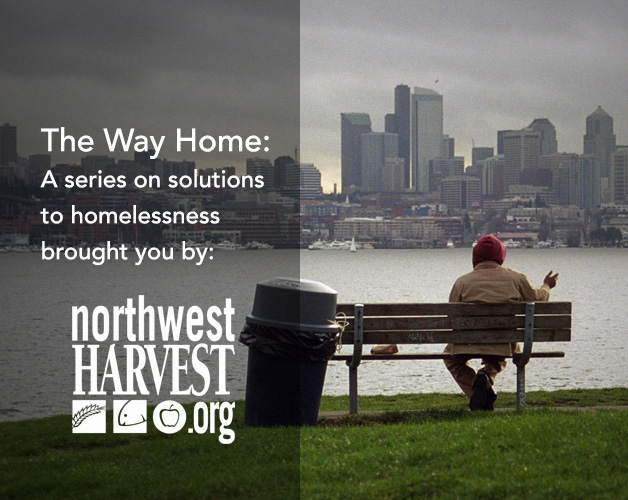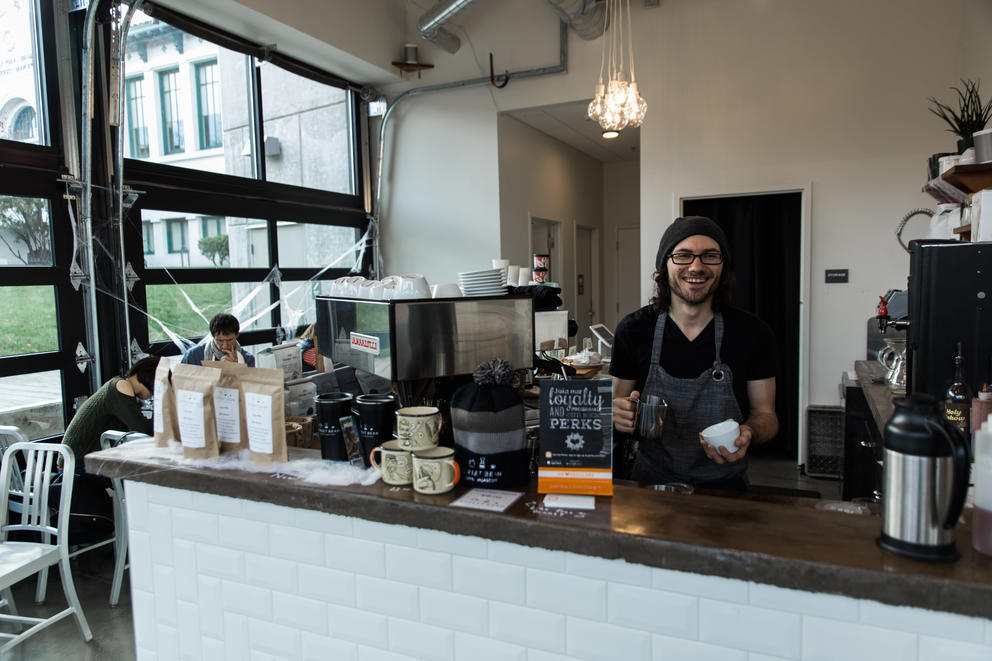Even in the well-caffeinated neighborhood of the University District, one new coffee bar stands apart from the others. Street Bean, which opened its doors this month, is a nonprofit that roasts and serves specialty coffee, but with a mission of helping homeless youth get off the streets and into gainful employment.
An offshoot of New Horizons — a Seattle-based youth homelessness resources group — the U-District store, located adjacent to the University District Food Bank on Roosevelt Way Northeast, is Street Bean’s second location. Since starting, more than 80 percent of graduates have attained gainful employment after six months of training, in which they learn the craft of being a barista and coffee roaster.With the addition of the new store, Street Bean will be doubling their capacity from eight graduates annually to sixteen.
“We are the only job training apprenticeship that includes a roasting component in terms of coffee,” said Jesse Smith, site director for the U District branch of Street Bean. “And that’s just such a lucrative skill to have, especially in a city like Seattle, that we’re really excited to offer that.”
It’s perhaps fitting that barista job training programs began in Seattle. Where else? The model has less to do with the local coffee-crazed culture and more with the flexible schedules that baristas have, and the highly marketable nature of those skills. Many of the youth who go through job training programs want to go back to school, and customer service jobs provide financial support to make that work.
But the size of the problem these programs are addressing is hard to measure. Relative to adult homelessness, youth homelessness is harder to see, more difficult to count, and affects one of the country’s most vulnerable, least vocal populations.
“There is no hard data,” explained Darla Bardine, executive director of the National Network for Youth.
Street Bean does not have the only barista job-training program in town. YouthCare’s Barista Training and Education Program was established in 2002, and trains 88 baristas annually. The program is a partnership with FareStart, which provides food service and cafe experience for the budding baristas, and Starbucks, which conducts mock interviews with participants at the end of the program. Many of the graduates go on to be hired by Starbucks.
Both programs have found success, and word has spread among the city’s homeless youth. Street Bean routinely gets two to three times as many applicants as they can take on for every cohort. YouthCare has focused on providing additional job training opportunities, while Starbucks has since partnered with the federal job training organization YouthBuild, expanded their job training operations, and is committed to opening 15 stores in low income areas with onsite training spaces specific for youth. One of these stores is set to open in White Center next year.
The majority of homeless youth are fleeing unsafe home environments, have been kicked out of home, or have aged out of the foster care system. Many who are of foster care age are hesitant to enter a system fraught with many of its own challenges and a poor reputation among youth.
Young people who are experiencing homelessness, by and large they haven’t completed their high school education,” said Bardine. “They have never lived independently…The brain is still developing until around 25 or 26. So they’re still at a point where they need adult guidance and assistance.”
YouthCare and New Horizons attempt to provide support to these youth for basic needs, emergency and transitional housing, mental health care, and education and employment programs. But there are more homeless youth than services available, and funding has been a constant struggle for these providers.
Part of the reason is that youth homelessness isn’t broadly understood as it’s own issue.
“The broader homelessness conversation has been dominated by visible chronic adult homelessness. We’re just now seeing a shift to youth being a part of those conversations,” said Bardine.
The lack of adequate funding extends to research as well. Federally, just $119 million is given out for all youth homelessness programs, with none of that money allocated to research programs to understand the breadth of the problem. It is estimated that 550,000 youth spend at least a week homeless every year, which equates to just over $200 invested per person. But the number is likely higher than that. Current research on youth homelessness makes it hard to get a full picture.
Chicago-based policy research center Chapin Hall is working to remedy that with the most comprehensive national survey on youth homelessness done to date, set to be completed next year. King County has more precise data on youth homelessness than most regions, according to the research center, and local organizations will be working with Chapin Hall on the new study.
For the past six years, the county has conducted a survey of homeless youth, which encourages them to self-report how they’re living. The count has remained steady at 824 for the past two years.
Even with best practices, however, many youth are unwilling to self-report and the number who access services is much higher than the annual count.
While it’s difficult to compare youth homelessness across regions or over time, the data that exists clearly shows that programs for homeless youth are grossly underfunded. Shelters and job training programs are consistently turning people away.
Nationally, funding has been stuck at roughly the same level for the last eight years. Last year, advocates achieved victory in the form of a five million dollar bump. But Bardine estimates funding needs to triple or quadruple at the federal level, and state and local increases are needed as well.
“The biggest need we have is funding,” she said. “We know what young people need. They’ll tell you, just ask them. So we know what we need to invest in. We just need a commitment from folks to make the investment that’s needed.”
—
This series made possible with support from Northwest Harvest. The views and opinions expressed in the media, articles, or comments on this article are those of the authors and do not reflect or represent the views and opinions held by Northwest Harvest.


